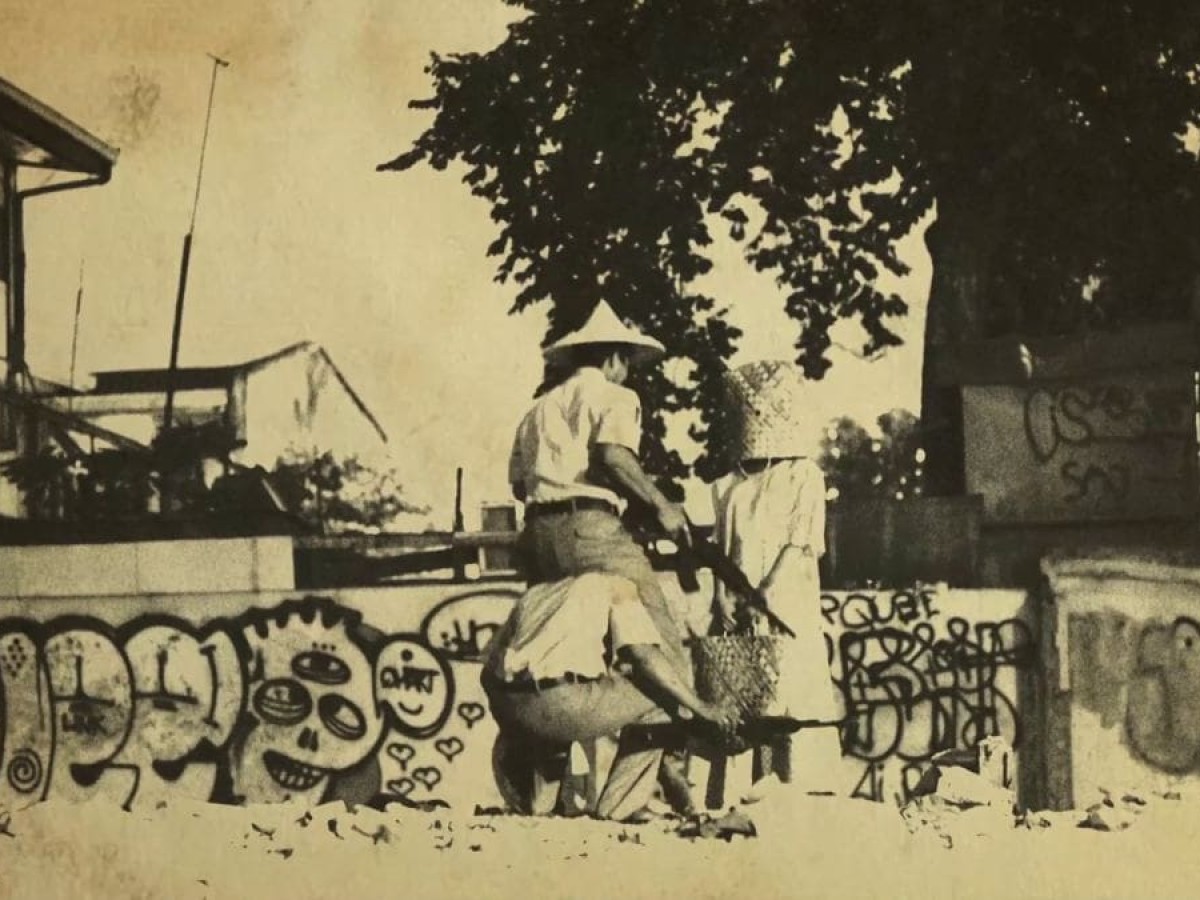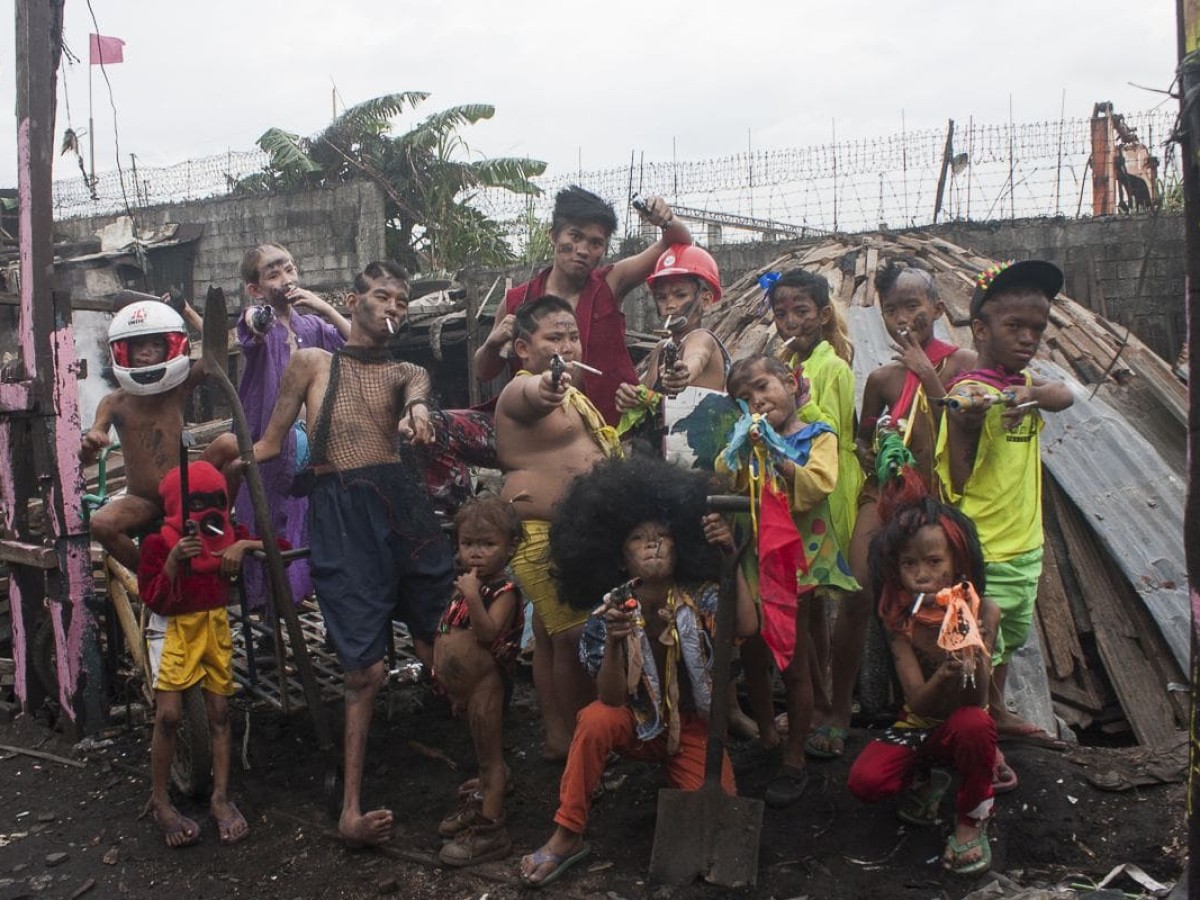This Is Not a Khavn Retrospective
Films and Cine-concert by Khavn
July 3 to 9, 2024
Filipino filmmaker, poet, writer, activist, and musician Khavn De La Cruz1 shocked the international film festival community at the turn of the century with images of his native country that were unlike anything seen before, instantly transforming himself into a cult.
By that time, so-called "world cinema" was a regular mainstay of several European and North American film festivals, but it was also, at that particular time, associated with the quickly spreading notion of slow cinema and a trend of self-exoticization. Just like many of his peers seeking an international spotlight in a freshly connected globalized society, Khavn2 was well aware of the Eurocentric and Anthropocentric expectations that lead to red carpets and shiny animal statues, but cared only about subverting them, along with any of the rules and regulations of both filmmaking and common decency. The subversion always starts with the opening credits. Films by Khavn3 all begin with a disclaimer This Is Not a Film by Khavn4.
Thirty years of restless filmmaking has resulted in over 50 features and over 150 shorts. In addition to his film work, Khavn5 has also written eight books of poetry, two short story collections, a novel, a reference book, and six manifestos. Our tribute to Khavn6 is therefore a far cry from a comprehensive retrospective; we can only begin by admitting that This Is Not a Khavn Retrospective, but a brief summer encounter with some of the most bizarre, radical, and, at the same time, socially relevant images that contemporary punk cinema has to offer.
The aforementioned manifestos are actually a perfect way to comprehend, appreciate, or simply enter the unholy cinematic universe of Khavn7 since he is one of those artists who intensely reflect upon their own work, are able to articulate themselves both through images and words (and music in this case), and blend theory and practice into a seamless whole.
Khavn8 already provided a perfect summary of his work ethos with his first manifesto, Day Old Flick Manifesto: Street Food Cinema, an inspirational piece of slam poetry that could easily replace the curriculum of most of the world's film schools and is worth reprinting in its entirety:
Work with the given.
From location & props to cast & crew.
Shoot in one location only.
Or if you have several locations, draw a map.
Cartography equals cinematography.
Keep cast to a minimum.
No actors doesn't mean no film.
One actor is more than enough.
Two is basic for dramatic conflict.
Three is a madding crowd.
Four is ...
You get it.
Utilize location.
Maximize surroundings.
Shoot in your own neighborhood.
Be open to the intrusion of outside forces.
Let the world in.
Life as co-director.
Master the art of improvisation.
Concept must kill.
Compensate for the time constraint with a surfeit of creativity.
Creativity is free.
Use animals in interesting situations.
If you kill them, make sure the camera is rolling.
Cast beautiful people.
You may or may not have a screenplay.
You may or may not have notes.
Break the rules.
Actually there are no rules.
So make them up.
Then break them.
Use found footage.
Cannibalize.
Mondo bizarro.
Have a great crew.
Use your limits to your advantage.
Embrace them.
Play pingpong without a net.
Be open to mistakes.
In fact, exploit them.
If you don't have good audio equipment, make a silent film.
Go crazy on sound design.
Use the noise.
Don’t pay people richer than you.
Pay kindness.
Crime does not pay.
If you want to get rich, don't make crime films.
If the permit is cheap, get one.
If it's expensive, shoot quick.
Run fast.
Life is short.
Have fun.
Utter beauty makes us speechless.
Mystery is spice.
Beautiful eyes are the key to great cinema.
The best blood is pig's blood.
When you feel like garbage, jump in a garbage cart.
When you feel like shit, you know where to go.
Hang yourself on imaginary rope.
Animal love is supreme.
God is in the details.
Love, first and foremost.
Lick the devil's left eye.
Great hair is essential.
When the day ends, the shoot ends.
Time's up.
Game over.
Repeat.
Work with the given.
Over the next five manifestos, Khavn9 expanded and evolved these guidelines – and along with them, his cinema – into an ever more precise, succinct, and compassionate form. His embrace of deprivileged means of production culminated in his latest manifesto, Be Movies, in which he draws the strongest parallel so far between filmmaking and life, claiming that "in film, as in life, you make your own rules. You can shoot without a script or follow the words to the hilt. It's your film. It's your life. Shooting without anything but your camera entails a certain kind of trust or letting go. It's like saying 'I love life, everything included.' There are no mistakes."
Khavn's10 quickly growing cinematic body of work is a project similar to the one undertaken by his compatriot Lav Diaz at about the same time – a comprehensive project to truthfully depict (and consequently critique) both the past and the present of their island society, complicated by centuries of colonization, imperialist violence, and domestic dictatorships. But whereas Diaz does it through the form of epic poetry, Khavn11 remains faithful to his DIY punk roots, his crazy kaleidoscopic approach to narration, and to his mission to overwhelm us with sights yet-unseen. (Jurij Meden)
With Khavn in attendance on July 3 (Cine-concert) and July 4, 2024
Filipino filmmaker, poet, writer, activist, and musician Khavn De La Cruz1 shocked the international film festival community at the turn of the century with images of his native country that were unlike anything seen before, instantly transforming himself into a cult.
By that time, so-called "world cinema" was a regular mainstay of several European and North American film festivals, but it was also, at that particular time, associated with the quickly spreading notion of slow cinema and a trend of self-exoticization. Just like many of his peers seeking an international spotlight in a freshly connected globalized society, Khavn2 was well aware of the Eurocentric and Anthropocentric expectations that lead to red carpets and shiny animal statues, but cared only about subverting them, along with any of the rules and regulations of both filmmaking and common decency. The subversion always starts with the opening credits. Films by Khavn3 all begin with a disclaimer This Is Not a Film by Khavn4.
Thirty years of restless filmmaking has resulted in over 50 features and over 150 shorts. In addition to his film work, Khavn5 has also written eight books of poetry, two short story collections, a novel, a reference book, and six manifestos. Our tribute to Khavn6 is therefore a far cry from a comprehensive retrospective; we can only begin by admitting that This Is Not a Khavn Retrospective, but a brief summer encounter with some of the most bizarre, radical, and, at the same time, socially relevant images that contemporary punk cinema has to offer.
The aforementioned manifestos are actually a perfect way to comprehend, appreciate, or simply enter the unholy cinematic universe of Khavn7 since he is one of those artists who intensely reflect upon their own work, are able to articulate themselves both through images and words (and music in this case), and blend theory and practice into a seamless whole.
Khavn8 already provided a perfect summary of his work ethos with his first manifesto, Day Old Flick Manifesto: Street Food Cinema, an inspirational piece of slam poetry that could easily replace the curriculum of most of the world's film schools and is worth reprinting in its entirety:
Work with the given.
From location & props to cast & crew.
Shoot in one location only.
Or if you have several locations, draw a map.
Cartography equals cinematography.
Keep cast to a minimum.
No actors doesn't mean no film.
One actor is more than enough.
Two is basic for dramatic conflict.
Three is a madding crowd.
Four is ...
You get it.
Utilize location.
Maximize surroundings.
Shoot in your own neighborhood.
Be open to the intrusion of outside forces.
Let the world in.
Life as co-director.
Master the art of improvisation.
Concept must kill.
Compensate for the time constraint with a surfeit of creativity.
Creativity is free.
Use animals in interesting situations.
If you kill them, make sure the camera is rolling.
Cast beautiful people.
You may or may not have a screenplay.
You may or may not have notes.
Break the rules.
Actually there are no rules.
So make them up.
Then break them.
Use found footage.
Cannibalize.
Mondo bizarro.
Have a great crew.
Use your limits to your advantage.
Embrace them.
Play pingpong without a net.
Be open to mistakes.
In fact, exploit them.
If you don't have good audio equipment, make a silent film.
Go crazy on sound design.
Use the noise.
Don’t pay people richer than you.
Pay kindness.
Crime does not pay.
If you want to get rich, don't make crime films.
If the permit is cheap, get one.
If it's expensive, shoot quick.
Run fast.
Life is short.
Have fun.
Utter beauty makes us speechless.
Mystery is spice.
Beautiful eyes are the key to great cinema.
The best blood is pig's blood.
When you feel like garbage, jump in a garbage cart.
When you feel like shit, you know where to go.
Hang yourself on imaginary rope.
Animal love is supreme.
God is in the details.
Love, first and foremost.
Lick the devil's left eye.
Great hair is essential.
When the day ends, the shoot ends.
Time's up.
Game over.
Repeat.
Work with the given.
Over the next five manifestos, Khavn9 expanded and evolved these guidelines – and along with them, his cinema – into an ever more precise, succinct, and compassionate form. His embrace of deprivileged means of production culminated in his latest manifesto, Be Movies, in which he draws the strongest parallel so far between filmmaking and life, claiming that "in film, as in life, you make your own rules. You can shoot without a script or follow the words to the hilt. It's your film. It's your life. Shooting without anything but your camera entails a certain kind of trust or letting go. It's like saying 'I love life, everything included.' There are no mistakes."
Khavn's10 quickly growing cinematic body of work is a project similar to the one undertaken by his compatriot Lav Diaz at about the same time – a comprehensive project to truthfully depict (and consequently critique) both the past and the present of their island society, complicated by centuries of colonization, imperialist violence, and domestic dictatorships. But whereas Diaz does it through the form of epic poetry, Khavn11 remains faithful to his DIY punk roots, his crazy kaleidoscopic approach to narration, and to his mission to overwhelm us with sights yet-unseen. (Jurij Meden)
1 Known primarily as Khavn and very likely the world's most prolific filmmaker, according to Variety.
2 Enfant terrible of Filipino cinema, said the Pesaro International Film Festival.
3 The new Takashi Miike, as claimed by Mondo Paura.
4 A rock'n'roll filmmaker with the sensibilities of Buñuel, as per GMA News.
5 Che Guevarra of the Digital Revolution, as reported by La Palma International Film Festival.
6 The Philippine's answer to Dogma manifesto, as stated by Singapore International Film Festival.
7 A real discovery and the Lars von Trier of the Philippines, wrote Festival du Nouveau Cinema de Montreal.
8 A punk rebel, at one point claimed Die Presse.
7 A real discovery and the Lars von Trier of the Philippines, wrote Festival du Nouveau Cinema de Montreal.
8 A punk rebel, at one point claimed Die Presse.
9 Once called a wunderkind by Sight & Sound.
10 Labeled "an experimental extremist" by the Rotterdam Film Festival.
11 Filipino Renaissance man and an ass-kicking rebel priest, according to Film Comment
Related materials
Photos 2024 - Khavn & Babel Gun



